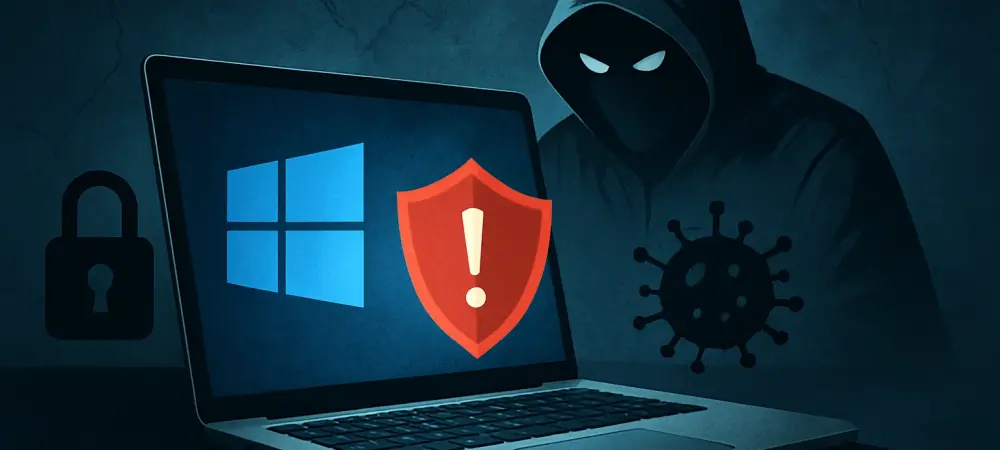What happens when the digital lifeline for millions of devices is severed in an era where cyber threats lurk around every corner, leaving users vulnerable to attacks? As of 2025, with Windows 10 reaching its end-of-life on October 14, a vast number of users and businesses remain tethered to this operating system, now stripped of security updates. This isn’t merely a technical expiration—it’s a looming crisis that could unleash a wave of cyberattacks on unprepared systems.
The significance of this deadline cannot be overstated. With over 40% of global endpoints still running Windows 10, according to data from remote desktop provider TeamViewer, the scale of potential vulnerability is staggering. This situation poses not just an inconvenience but a direct threat to personal data, corporate networks, and even national infrastructure, echoing past disasters like the 2017 WannaCry ransomware attack. The urgency to act is palpable as the window for safe transition narrows.
A Ticking Clock for Millions of Users
The countdown to October 14 has left countless individuals and organizations on edge, grappling with the reality of unsupported software. Many are unaware or unprepared for the abrupt halt in security patches and technical support that Windows 10’s end-of-life brings. This deadline marks a critical turning point, shifting the burden of protection entirely onto users who may lack the resources or knowledge to safeguard their systems.
Beyond individual concerns, businesses face a particularly dire situation. A significant portion of corporate environments still relies on Windows 10 for daily operations, risking not only data breaches but also compliance failures. The sheer volume of affected systems worldwide amplifies the potential for widespread disruption if action isn’t taken swiftly.
Why This Deadline Matters More Than Ever
The cessation of support for Windows 10 translates to a complete stop in security updates and bug fixes, leaving devices as open targets for cybercriminals. Recent surveys paint a grim picture: 26% of UK users, as reported by consumer advocate Which?, have no plans to upgrade, while an additional 11% remain undecided. Such hesitation creates a fertile ground for attacks, reminiscent of historical cyber incidents that exploited outdated systems.
The real-world implications are chilling. The WannaCry ransomware attack of 2017, which paralyzed the UK’s National Health Service by targeting unpatched Windows XP systems, serves as a stark warning. Without updates, Windows 10 users risk similar devastation, from stolen personal information to crippled business operations, highlighting the urgent need for proactive measures.
The Cybersecurity Cliff Edge: Risks of Staying Put
Remaining on Windows 10 past the end-of-life date is akin to navigating a minefield without a map. Both Microsoft and the UK’s National Cyber Security Centre (NCSC) have issued stern advisories, pushing for immediate upgrades to Windows 11, which offers bolstered security features. The dangers are clear: heightened malware risks, zero-day exploit vulnerabilities, and escalating maintenance costs for unsupported systems.
For businesses, the stakes are even higher. Non-compliance with security standards could lead to denied cyber insurance claims, leaving companies financially exposed. Experts caution that this scenario creates an “open season” for hackers, who are likely to capitalize on unpatched flaws with ruthless efficiency, drawing parallels to past large-scale breaches that exploited outdated software.
The loss of Microsoft’s technical support further compounds these challenges. Organizations and individuals alike will find themselves isolated, forced to seek costly third-party solutions or face the consequences of inaction. This perfect storm of risks underscores the critical nature of transitioning before it’s too late.
Expert Voices and Real-World Consequences
Industry leaders have sounded the alarm with striking clarity. Dr. Yvonne Bernard, CTO at Hornetsecurity, labels the Windows 10 support cutoff as a “cybersecurity and compliance cliff edge,” particularly for businesses clinging to outdated software. This perspective highlights the cascading effects of neglecting upgrades, from operational hiccups to severe regulatory penalties.
Charaka Goonatilake, CTO at Panaseer, offers an equally vivid caution: “Sticking with Windows 10 beyond October is like leaving your front door wide open in a bad neighborhood.” Such analogies bring the abstract threat into sharp focus, emphasizing the inevitability of increased cyber assaults. Predictions suggest that attackers will intensify efforts to exploit Windows 10 vulnerabilities immediately after the deadline, capitalizing on the absence of patches.
These expert warnings are not mere speculation but are grounded in historical precedents. The lingering memory of WannaCry and similar attacks serves as a grim reminder of what awaits those who delay. The consensus is unanimous: the time to act is now, before the fallout becomes irreversible.
Taking Action: Steps to Upgrade or Mitigate Risks
For individuals, the first step toward safety involves assessing device compatibility with Windows 11. Navigate to Settings > Update & Security > Windows Update, or utilize the PC Health Check app to confirm if hardware meets requirements like TPM 2.0, UEFI, and Secure Boot support. This simple check can clarify whether an upgrade is feasible or if alternative solutions are needed.
For those unable to upgrade immediately, Microsoft offers a temporary lifeline through the Extended Security Update (ESU) program. Available for a one-time fee, this service provides critical patches from October 15, 2025, to October 13, 2026, buying time for personal users to plan their next move. However, this is a stopgap measure, not a long-term fix, and should be approached with caution.
Enterprises face a more complex challenge, requiring a strategic overhaul. Mapping out Windows 10 usage, prioritizing high-risk systems, and implementing compensatory controls are essential steps. As Goonatilake advises, adopting a data-driven, risk-based approach enables security leaders to justify investments and balance immediate upgrades with interim protections, ensuring no critical system is left vulnerable.
Looking back, the journey through Windows 10’s end-of-life saga revealed a landscape fraught with peril but also opportunity. The concerted push by experts and authorities alike underscored a pivotal moment where proactive steps could avert disaster. Reflecting on this, the path forward demands not just reaction but sustained vigilance—upgrading systems, embracing modern security protocols, and fostering a culture of readiness to shield against the ever-evolving tide of cyber threats.

